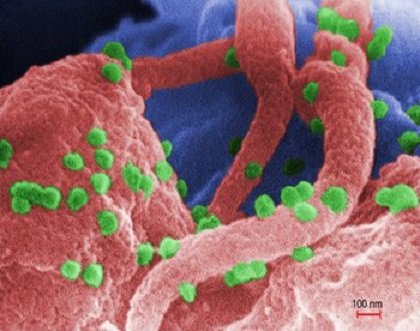CNN — A French teenager infected at birth with HIV has shown the ability to control levels of the infection in her body — without being on antiretroviral treatment.
The finding provides new hope that a “functional” cure for HIV — where the virus is brought down to low levels but not eradicated in the body — may one day be possible.
The 18-year-old female, whose mother was HIV positive, was given antiretroviral treatment soon after birth but stopped at age six and has since maintained undetectable levels of the virus in her blood — known as remission — for 12 years.
“This is the first [time] long-term remission has been shown in children, or adolescents,” said Asier Saez Cirion from the Institut Pasteur in France, who presented the findings at the 8th IAS conference on HIV pathogenesis, treatment and prevention, in Vancouver this week.
Treatment at birth
The researchers believe there may be something unique in her biology that, combined with early treatment, enabled her to control the infection. But for now, the reason remains a mystery.
She was initially treated with antiretroviral drugs as a prophylactic to prevent infection, and then given a combination of four antiretroviral drugs when the virus was found to persist. She was monitored as part of a group of child HIV patients, but failed to go in for observations between the age of five and six, during which time her family chose to stop her treatment.
On returning for check-ups one year later, medical teams found undetectable levels of HIV in her blood despite her break from treatment.
More than 12 years later, the virus remains undetectable.
Learning from adults
“We have already found it was possible in adults,” said Saez-Ciron. This work follows on from his previous research, in which 14 adults with HIV in France — known as the “Visconti patients” — were treated for HIV soon after infection but stopped taking their drugs three years later and showed no resurgence in the amount of virus found in their blood. The group are considered to be post-treatment controllers of the virus.
Today, 12 remain in control of their infection and without drugs and they have an average of 10 years in remission.
What these adults have in common with the French teenager is the early initiation of antiretroviral treatment, thought to aid remission by preventing the formation of HIV reservoirs inside the body.
“Again, treatment was initiated very close to the period of infection,” said Saez-Ciron.
However, in practice, most adults infected with HIV aren’t diagnosed until the virus has taken hold — making early treatment a challenge. But children at risk of infection from their mothers can be identified — and treated — during pregnancy, or at birth.
But pediatric experts warn this kind of remission is not common.
A rare exception?
“This case is very rare,” said Deborah Persaud, a virologist at Johns Hopkins Children’s Center in Baltimore, who worked on the case of the “Mississippi baby,” an infant once believed to have been functionally cured of HIV as a result of immediate treatment with antiretrovirals. No virus was detected for more than two years, before it again showed up in tests.
Persaud is excited that remission has been achieved for this length of time in the teenager, but warns it is unlikely to be replicated easily. “Many kids have gone off treatment — and treated that early — and we haven’t seen this outcome,” she said. “Parents should not take their child of their antiretroviral regimen to see if they’re like this child.”
The team at the Pasteur Institute agrees.
“The fact that you initiate treatment very early doesn’t imply you will achieve remission of infection,” said Saez-Ciron.
The search for a reason
His team are now exploring the biology behind this ability to control infection in hope of identifying key factors — or markers — in the body that could predict the possibility of remission, and ideally a functional cure, in others. It’s hoped this form of “cure” would result in virus levels being so low, they no longer do enough damage to the immune system to cause adverse health consequences.
“Most people are not going to be able to control after treatment interruption, but some can,” said Saez-Ciron. “What we are trying to do now is understand why some can and most do not.” That could help develop strategies to aid this type of remission in others.
Nobel laureate Francoise Barre-Sinoussi, who co-discovered HIV in 1983, and works at the Institut Pasteur, said: “We are learning from this patient, that’s why it’s so exciting.
“We are learning clearly which kind of response the strategy for the future should use. This is critical if we want to make progress in the field of remission in the future.”
Saez-Ciron also presented the results at the 2015 Towards an HIV Cure symposium, held at the beginning of the conference, in which HIV cure researchers gathered from around the world to hear the latest news in the field.
The announcement of the case of the French teenager was met with restrained excitement, but also a desire for more examples of this kind of functional cure.
“Being free of viral rebound is impressive,” said Anthony Fauci, head of the U.S. National Institute of Allergy and Infectious Diseases (NIAID), who spoke at the conference.”But it’s only one case … as time goes by you [need to] accumulate more evidence.”
